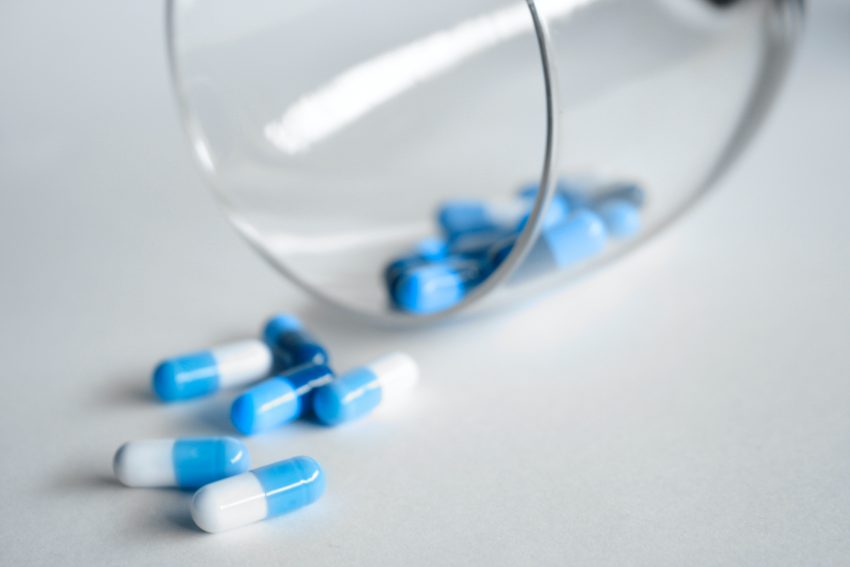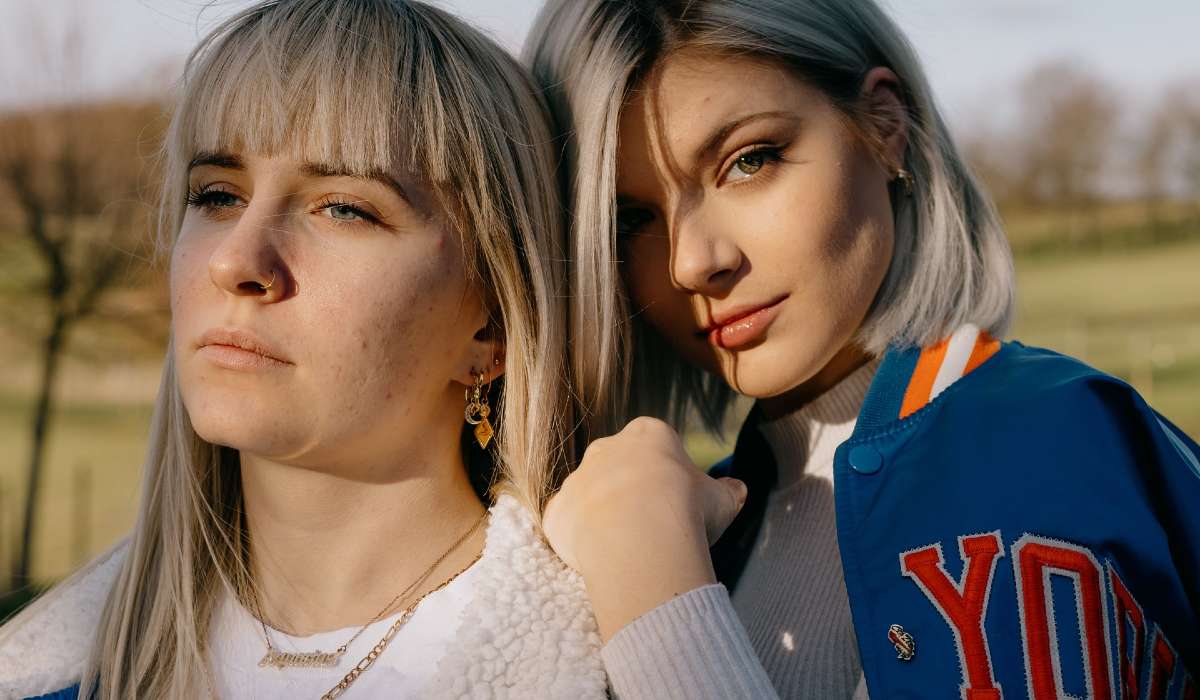Changes in our skin as we age are inevitable, including loss of moisture, changes in…

Rosacea Awareness Month: Everything You Should Know About Rosacea
Many of us have heard of rosacea and have a vague notion of what exactly it is. But since April is Rosacea Awareness Month, we thought now might be a perfect time to make sure you’re as informed as can be on the subject.
In this post, we’ll cover everything from what it is, to the types, what causes flare-ups and the treatments available.
So what is rosacea?
In short, rosacea is a commonly occurring chronic inflammatory skin condition. It’s usually most visible on the face, and though it can affect all skin types, it’s particularly common amongst Northern European and North American people. It’s also more likely to affect the fair-skinned.
Though it can also occur in people with darker complexions, rosacea presents as persistent redness, visible blood vessels and spots, which are often more noticeable on paler skin. Some dermatologists compare the appearance of rosacea to acne, although the two are different in many ways.
The cause of rosacea is unknown, but some believe there is a hereditary aspect to the condition. We most often see it in middle-aged women, although men can suffer from it, too. And, in fact, it is often more severe for men.
What are the symptoms?
Rosacea usually presents with a combination of its four major symptoms, which can make it simple to identify (though not always).
- The first is flushing in the face, which tends to be persistent and most commonly noticeable around the nose and cheeks.
- The second is visible thread veins, which are blood vessels that also appear around the nose and cheeks. These can be removed with laser treatments.
- The third are red spots, which can be pus-filled and easily misdiagnosed as acne without expert help.
- The fourth symptom is a thickening of the skin, which often looks like bumpy tissue that most commonly appears around the nose. We usually see this in male patients, and it’s the rarest of the four symptoms.
Occasionally, rosacea is mistaken for eczema or dermatitis, though it’s not commonly associated with dry skin except in individual cases. However, they both share symptoms such as inflammation and redness, which can present similarly.
Though most often diagnosed in middle-aged men and women, some rosacea patients will begin to display symptoms in their 20s. There are several types of rosacea, which can vary considerably according to demographic. This is why it’s absolutely essential to visit a dermatologist if you suspect you have symptoms, and get an accurate diagnosis.
Is there more than one type of rosacea?
Most people think of rosacea as a cosmetic skin condition presenting with a flushed, red face and perhaps visible blood vessels under the surface of the skin. Though this is often true (though some patients also report itching and soreness), there are actually four subtypes of rosacea that manifest differently, and quite distinctly.
Subtype 1: Erythematotelangiectatic (ETR) Rosacea
Most commonly found in women in their 30s and older, this is the type of rosacea that most people recall. Since Erythematotelangiectatic rosacea is a bit of a mouthful, most people shorten it to ETR. This type presents with the following symptoms:
- Flushing of the face, often for prolonged periods
- Persistent redness in the centre of the face
- Small, visible blood vessels and thread veins under the surface of the skin
Increased blood flow into capillaries close to the surface of the skin, known as hyperemia, is a prime cause of each of these symptoms. Although ETR isn’t normally painful, the visible changes to the skin can often cause a loss of confidence in patients.
Subtype 2: Acne Rosacea
Rosacea can sometimes be misdiagnosed as acne, and for good reason. Acne rosacea gets its name from the acne-like breakouts it causes, most often on the surface of the cheeks and nose. These can sometimes be yellowish in colour, with pus-filled pustules that give rise to its alternative name: papulopustular rosacea.
Like other forms of rosacea, the exact cause isn’t known for certain, but research has shown it could be linked to demodex mites. Many patients with acne rosacea have a higher-than-average number of these on their face, near hair follicles and sebaceous glands.
Doctors usually treat this type of rosacea with antibiotics, which also supports the theory about demodex mites. However, it could simply be that antibiotics work well as they have anti-inflammatory properties.
Subtype 3: Rhinophyma
Colloquially referred to as whisky nose, rhinophyma is a form of rosacea characterised by enlarged sebaceous glands under the surface of the nose. In such circumstances, the glands form together and cause the nose to swell.
Once, experts thought this was caused by excessive drinking. Now though, we now know that it’s a consequence of built-up lymph fluids. This type of rosacea is most common in men, particularly those aged 50 or over.
Though the redness and inflammation of rhinophyma can be treated to an extent, this subtype is the most difficult form of rosacea to treat.
Ocular Rosacea | Subtype 4
Affecting over half of rosacea sufferers, ocular rosacea usually develops besides one of the other three subtypes, and has several distinct symptoms:
- Dry and itchy eyes
- Inflammation and redness around the eyelashes
- Redness in the sclera (whites) of the eyes
In most cases, the symptoms of ocular rosacea clear up alongside the accompanying subtype, but can still be uncomfortable. To avoid further irritation and provide relief, it’s advisable to use eye drops to ensure the eyes are hydrated.
What causes rosacea flare-ups?
Though the causes of rosacea aren’t fully understood, we do have some knowledge on what can trigger, contribute to or worsen a flare-up.
Sensitivity to sunlight and sudden changes in temperature are common triggers. Although, some patients note that their rosacea is less prone to cause them trouble during the warmer summer months.
Others have found that certain foods and drinks can contribute to flare-ups, including alcohol, caffeinated drinks such as tea and coffee, and hot, spicy food.
Can rosacea be cured or treated?
Unfortunately, medical science has yet to reach a stage where we can cure rosacea. That said, there are several treatments that experts and sufferers have found effective means of easing the symptoms.
A doctor can prescribe topical prescription medications and antibiotics to treat rosacea, and these can lead to remission for up to six months at a time. However, it is possible to remove some symptoms entirely using laser treatments, which have proven incredibly effective for patients struggling with redness and flushing.
How should I manage my rosacea?
The first thing you can do to try to keep your rosacea under control is identify your triggers. These are likely to be different for everyone, but try to keep a diary of your food, drink and general habits to identify patterns in how your rosacea reacts to what you eat and do.
Avoiding triggers is key, but it’s more important to ensure you seek medical attention if your symptoms are causing you problems. When left untreated, rosacea can cause other associated problems such as irritation of the eyes.
Treating Rosacea and What to Avoid
When treating rosacea, it’s crucial that you follow advice from a dermatologist. In general, it’s a good start to only use gentle, natural skin products that are fragrance-free. This is particularly important during a flare-up.
However, remember that rosacea is a medical condition, and as such should be treated as one. Specially prescribed medications like antibiotics and topical creams are likely to have the strongest effect on your symptoms. Keep in mind though, these can only be prescribed by a doctor.
Can I wear make-up with rosacea?
The quick answer is yes, but it might be better for your skin to let it breathe.
However, there are particular types of make-up that will be more effective at reducing the appearance of rosacea. Green, colour-correcting concealers are excellent for balancing out redness of the skin. This, in turn, will tone down the appearance of any inflammation. You should apply these before your normal foundation.
You should avoid heavy foundations where possible, and since sunlight can trigger rosacea flare, it’s best to opt for one with an added SPF.






